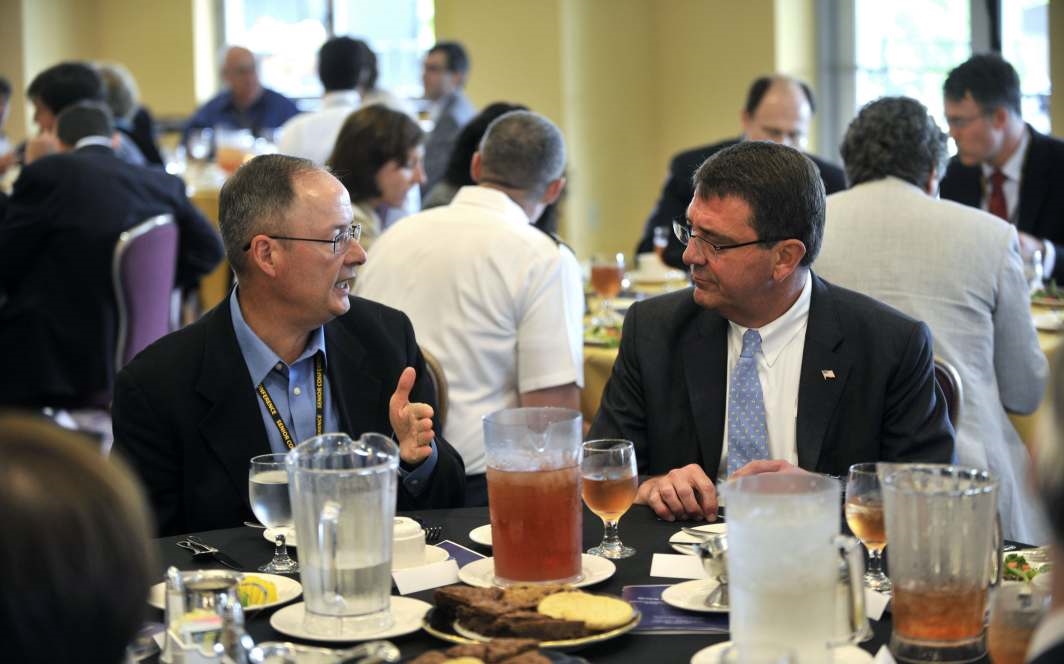
There are many factors good negotiators try to control to give them a competitive advantage in negotiations. Factors such as timing and the location of the meeting, as well as the use of body language and even what each party had to eat can contribute to more successful negotiations.
Negotiations Timing
The time-frame of a negotiation can change a party’s negotiating strength.
As a buyer of goods and services, it is valuable to know that most sales organizations and salespersons have monthly sales quotas. For example, a car dealer has to sell so many cars in a month. If the sales quota has not yet been met at the end of the month, the dealership is much more likely to accept deals they would never have considered during the month.
When I bought my wife a Lexus last year, I waited until December 30th to go to the dealer and struck an incredible deal that was well below the published Kelly Blue Book value.
Timing is always an issue when I mentor clients looking to buy or sell a business. If the seller has time constraints, such as an illness or moving out of state, the buyer is in a much better place to strike a good deal.
Remember that when the other party is in duress because of a timing issue, they are relieved when the deal is done so they can move on. As a result, they are far less likely to feel they were fleeced in a win-lose type of deal. Most will view it as a compromise deal when the deal is done because a “no-deal” outcome is not acceptable.
The same can be said if the buyer needs a deal to get done in a shorter time-frame than the seller. In this case, the buyer has more power and can extract additional concessions from the seller.
When I was selling my first business to a publicly held company, we accepted a basic framework for the deal that included some cash at closing and company stock. During the due diligence process, we discovered that the company buying us had committed to meeting certain revenue numbers to its shareholders. It needed the purchase of my business to meet those numbers or its stock price would certainly have suffered. Armed with this piece of valuable knowledge, we deliberately slowed down the negotiations process. The buyer, desperate to make the deal happen before the reporting date to shareholders, agreed to an additional earn-out provision that netted us several hundred thousand dollars more than the original purchase agreement.
Location Matters
Another tactic in negotiations is to have any face-to-face meetings either at your place or at the very least, a neutral place. If at all possible, you do not what to have any negotiations in the other party’s conference room, as they will have the home-field advantage. When you are forced to meet the other party at their place of business, you see their name on the front door, their employees, you feel their business vibe as you walk thought their office area, etc. All of this increases the confidence level of the home team. In effect, they control everything, often even the timing of the meeting.
A better strategy is rather than meet on the other party’s turf, a good negotiator will try to get the other party to meet them on their turf or will insist on meeting them at a neutral location. This is one reason arbitration works since neither party has the home-field advantage.
The table where you negotiate also sends a message. Negotiations often occur in conference rooms. If one party has a member sitting at the head of the table, it conveys power.
In my old board room, we use to direct our negotiation partners to chairs that were slightly lower than our chairs. The seat height was not enough to make them consciously notice but enough to send a subtle unconscious message about who had more power.
When both parties sit across from each other at a rectangular table, it sets the expectation that the parties are adversaries ready to do battle. Alternatively, rather than be subjected to these subtle manipulations, look for a round table where you can sit next to the other party. If your only option is a square table, sit diagonally across (caddy corner) instead of opposite each other if you want to set a less aggressive tone.
Body Language
Good negotiators recognize the value of body language and use it intentionally. When the other party says something that you do not feel is acceptable, fold your arm across your chest or roll your eyes to send the subtle message that you do not like their position. When you like what the other party says, lean in or place your hands palms up on the table to signal that you’re favorable to their response and convey openness to their idea.
Foods
What you eat before a negotiation also matters. Eating a heavy meal will make you sleepy as your body digests your meal. Instead, you should eat a meal that will boost your energy and cognitive functions.
Growing up, my mom used to say that fish was brain food… and she was right. Fish and chicken are much better than eating beef, which takes more bodily resources to digest.
Coffee is also good to boost your energy and cognitive functioning going into a negotiation. Make sure you are also properly hydrated as this will also help you be a better negotiator.
Never personally consume alcohol before or during a negotiation as it will impair your judgment. Depending upon the situation, you may want to offer the other party an alcoholic drink but when it is your turn, decline to join them and chose another non-alcoholic drink option that will not cloud your thinking.
In fact, negotiating a deal over a meal checks off several boxes – it is a neutral place, they often have round or square tables where you can sit caddy corner, or you can even sit at the bar where you can sit side by side.
Speaking of restaurants, another food-related negotiation tactic is to order food that you can share. Sushi, Indian, and Chinese restaurants often have meals that are shareable and even encourage sharing. If Asian food is not to your liking, choose an appetizer that you can share because when you share food, research suggests that the other party is more open to collaboration.
Gift Giving
Another powerful tactic is using a gift to create reciprocity in the other party during a negotiation. At the beginning of a negotiation, offer the other party a thoughtful gift. It does not have to be expensive. When it comes to strategic gift-giving, you can discover a lot about another person using the Reference USA lifestyle database.
Since it is very unlikely that the other party will have thought about using a gift to leverage reciprocity, you will enter the negotiations with the other party feeling that they need to reciprocate in some fashion, which will most likely come in the form of a free concession. Even a simple act of kindness such as opening a door, pulling out a chair, or offering the other party a drink or a meal (when meeting on your turf) can all create a degree of reciprocity.
Negotiations Power Words
During negotiations, there is no more powerful word that the word “Fair”. Fair is a very powerful word that nobody in their right mind would argue against. Most people have an innate need to want to be fair. Look for ways to inject the word “fair” into the dialog whenever possible.
Create conditions to leverage social proof. People want to follow the crowd and have an irrational fear of missing out that can be used in negotiations to your advantage. When you say “Your competitor accepted these price and terms” or “Your neighbor bought this item from us (May 09, 2020)”, the other party is much more inclined to feel that the deal is fair since other people agreed to it.
How can you use, timing, location, food, gifts, and spoken and body language to create advantages in your next negotiations?
Business & Finance Articles on Business 2 Community
(34)






